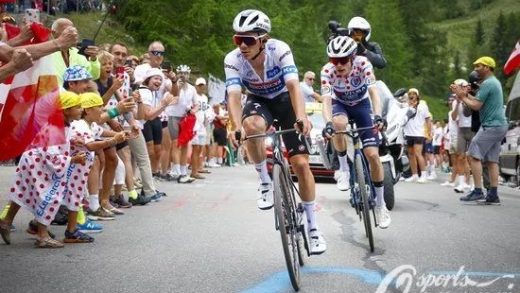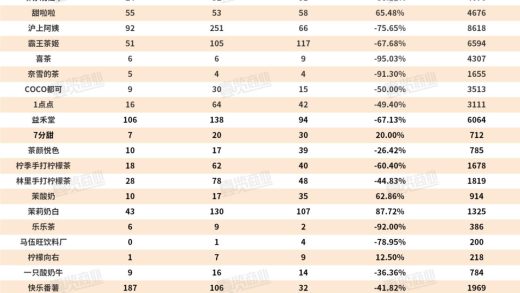Positive Comments: The Intergenerational Co-living Model Activates a New Elderly Care Ecosystem, Reflecting the Rational Breakthrough of Young People and the Reconstruction of Social Values
The news of a 27-year-old young man in Yueqing, Zhejiang, living with his grandmother in a nursing home has gone viral. Behind this seemingly “abnormal” choice is actually a triple breakthrough in economic rationality, intergenerational integration, and business model innovation. This event not only provides new ideas for young people to solve their housing pain points but also injects fresh impetus into the reconstruction of the elderly care industry and social relations through the “intergenerational co-living” approach.
First of all, the young man’s choice is a precise “cost-performance breakthrough” under high-cost pressure. Currently, the monthly rent for a single room in first- and second-tier cities generally exceeds 1,000 yuan. Coupled with additional fees such as water, electricity, and the internet, the average monthly housing expenditure of young people who have just entered the workplace or are preparing for exams often accounts for 30% – 50% of their income. The price of 1,500 yuan (about 1,700 yuan including water and electricity) provided by the nursing home not only meets the basic housing needs but also includes additional values such as nutritious meals, regular schedule management, and security services. This compound cost advantage of “housing + services” is essentially a rational decision of young people to actively explore “non-standard living scenarios” when the thresholds of traditional housing paths (renting and buying a house) are high. As a netizen in the news said, “You can take care of your grandmother and get a stable place to live at the same time.” This “kill two birds with one stone” choice precisely reflects the soberness of contemporary young people in pursuing the “optimal solution” under resource constraints – they are not “lying flat” but investing in the future in a more practical way.
Secondly, the intergenerational co-living model provides a heartwarming example for alleviating the social pain point of “intergenerational isolation.” In modern society, age stratification is becoming increasingly prominent: children are in school, young people are in the workplace, and the elderly are in nursing homes or empty nests. The natural interaction scenarios between different generations are becoming fewer and fewer. After young people are introduced into the nursing home, the closed elderly care environment is injected with “external vitality.” The internet hotspots, skills in using smart devices, and popular culture brought by young people can help the elderly stay connected with society and relieve the loneliness caused by “social death.” The life experiences and calm mentality of the elderly, on the other hand, provide an emotional anchor for young people who are drifting and relieve the “urban loneliness.” This intergenerational interaction cannot be replaced by the stylized services of caregivers – it is free from interest calculations and is closer to the purity of kinship, transforming the nursing home from an “elderly care terminal” into an “all-age shared community.” The news mentioned that “two girls preparing for postgraduate entrance exams have booked to move in,” which is a real proof of this “mutual healing” value: young people need a stable environment to prepare for exams, and the elderly need vitality to nourish their souls. The complementary needs of both sides in the same space create a social benefit of “1 + 1 > 2.”
Finally, this model provides a breakthrough idea for the business model innovation of the elderly care industry. Traditional nursing homes are facing the dilemma of “heavy assets and slow returns”: the initial fixed costs (property, manpower, facilities) are high, but the occupancy rate climbs slowly, and the vacant rooms become a “cost black hole.” The nursing home in Yueqing opened its idle beds to young people at a low price, which is essentially a successful practice of the “cross-subsidy” strategy – using the rent from young tenants to share the fixed costs and providing a survival buffer period for the core elderly care business. At the same time, the “phenomenal spread” of the event itself has brought free brand exposure to the nursing home, and its credibility far exceeds that of traditional advertising. More notably, the nursing home clearly screens young people who are “stable in work and of high quality,” which is actually an accumulation of “high-quality social capital”: the presence of these young people is a “living advertisement” that can enhance the reputation of the nursing home among the elderly and attract more elderly people to move in. This “using light assets to support heavy assets” model (using the light-asset income from young tenants to support the core heavy-asset business) provides a replicable sample for the elderly care industry to explore the new blue ocean of the “silver economy.”
Negative Comments: Potential Challenges and Sustainability Concerns of the Intergenerational Co-living Model
Although the intergenerational co-living model shows positive significance, as a new thing, it still needs to face many real challenges. In the short term, the implementation of the model may lead to conflicts in living habits. In the long term, issues such as the sustainability of its business logic and the social acceptance need more in-depth thinking and adjustment.
Firstly, there are potential contradictions in the “life synergy” of intergenerational co-living. The core service object of a nursing home is the elderly, and its management rules (such as “closing the door at 8 p.m.” and “regular schedule”) are mainly designed around the needs of the elderly. The living rhythms of young people (such as overtime work, socializing, and night reading) may conflict with the “structured environment” of the nursing home. For example, the news mentioned that “closing the door at 8 p.m. is a bit inconvenient for young people.” If more young people move in the future, does the access control time need to be adjusted? If it is adjusted, it may affect the safety and schedule of the elderly. If it is not adjusted, the living experience of young people will be compromised. In addition, details such as differences in dietary preferences (the elderly need a light diet, while young people may prefer takeaways) and the use of public spaces (such as the time allocation of the activity room) may also lead to frictions. If the nursing home lacks clear “intergenerational synergy rules,” the initial “warm narrative” may turn into a negative case of “management chaos.”
Secondly, the sustainability of the business model depends on multiple preconditions and is uncertain. Currently, the core factor attracting young people to the nursing home is the “low price” (1,500 yuan per month). But can this price be maintained in the long term? If more young people move in the future, does the nursing home need to increase services for young people (such as improving Wi-Fi speed and opening study rooms), which will drive up the operating costs? If the costs rise, will the price increase be passed on to young people? Once the rent advantage disappears, the willingness of young people to move in may decline. In addition, the core income of the nursing home should still come from the elderly care business. If it overly relies on the “cross-subsidy” from young tenants, it may lead to an imbalance in resource allocation – for example, using more public spaces for young people’s activities and squeezing the service resources for the elderly, which will actually damage the experience of the core customer group. The news mentioned that “one of the six floors of the nursing home is open to young people.” If more floors are opened in the future, how to balance the primary and secondary relationships between “elderly care” and “co-living” is a key test for the nursing home.
Thirdly, the traditional social perception of the “function of a nursing home” may limit the promotion of the model. In the public’s impression, a nursing home is an “exclusive space for the elderly” and even has a tragic color of “the last stop of life.” The move of young people into a nursing home may be misunderstood by some as “early retirement” or “escaping competition.” This stereotyped perception may affect the social acceptance of the model. For example, the news mentioned that “some older group members think that young people are ‘lying flat.'” If this prejudice spreads, it may cause young people to give up the choice of a nursing home due to concerns about social evaluation. At the same time, some elderly people or their families may worry that the move of young people will “destroy the elderly care atmosphere in the nursing home,” which will in turn affect the occupancy rate of the core customer group (the elderly). How to guide the public through publicity to understand the positive values of “intergenerational co-living” (such as the improvement of community vitality and the satisfaction of the spiritual needs of the elderly) is the key to promoting the model.
Suggestions for Entrepreneurs: Build a Sustainable Ecosystem of “Intergenerational Co-living” with Needs as the Anchor
This event provides multi-dimensional inspiration for entrepreneurs, especially in fields such as the elderly care industry and community services. The following directions can be explored:
Precisely position segmented needs and design a “two-way adaptable” service system. Entrepreneurs need to conduct in-depth research on the core needs of young people and the elderly: young people need a low-cost, stable, and supportive living environment, while the elderly need emotional connection and a sense of social participation. In service design, the needs of both sides can be balanced through “regional management + shared spaces” – for example, setting up exclusive study rooms and activity areas for young people while retaining quiet spaces for the elderly. In public areas (such as the dining room and the garden), intergenerational interaction activities (such as “elderly courses” and “youth technology mini-courses”) can be designed to promote natural communication. In addition, in response to the differences in living habits, an “intergenerational convention” (such as flexible access control time and rules for using public spaces) can be formulated to resolve potential conflicts through regulations.
Balance the business logic and social value and avoid “emphasizing traffic over essence.” The core of a nursing home is “elderly care services.” The introduction of young people should be based on the premise of not affecting the experience of the elderly. Entrepreneurs need to clarify the boundaries of “cross-subsidy”: the rent from young tenants can be used to supplement the operating costs, but it should not occupy the nursing resources for the elderly (such as the number of caregivers and medical facilities). At the same time, they need to be vigilant against short-sighted behaviors driven by “traffic” – for example, over-packaging the concept of “intergenerational co-living” to attract young people while ignoring the service quality. The overall atmosphere of the community should be improved through “screening high-quality customer groups” (such as the nursing home in the news emphasizing “stable work and high quality”), and the reputation should be established through “real experiences” rather than “marketing slogans.”
Build an ecological closed-loop of an “all-age community” and expand diversified income sources. The potential of the intergenerational co-living model lies not only in rent but also in the commercial exploration of “all-age needs.” For example, in response to the learning and career needs of young people, educational institutions can be introduced for cooperation (such as postgraduate entrance exam tutoring and skill training). In response to the health management needs of the elderly, customized services can be provided in cooperation with medical institutions. External resource sponsorship can also be attracted through community activities (such as intergenerational handicrafts and cultural lectures) to form a diversified income structure of “rent + services + sponsorship.” This ecological closed-loop can not only enhance the community’s stickiness but also reduce the dependence on a single income source and enhance the sustainability of the model.
Actively guide social perception and convey the positive values of “intergenerational integration.” Entrepreneurs need to convey the warmth and values of “intergenerational co-living” to the public through real cases and user stories (such as interaction videos between young people and the elderly and records of community activities) to dispel the prejudices of “nursing home = gloom” and “young people = lying flat.” For example, a documentary on “intergenerational co-living” can be jointly launched with the media to show scenarios such as how young people help the elderly integrate into digital life and how the elderly encourage young people with their life experiences, so that the society can see the dual empowerment of this model for individuals and the community.
Conclusion: The news of a 27-year-old young man moving into a nursing home is not only a story of an individual choice but also a mirror reflecting social changes. It shows the rational breakthrough of young people under pressure, reveals the social value of intergenerational integration, and provides a vivid sample for the innovation of the elderly care industry. In the future, whether this model can change from a “phenomenon” to a “norm” depends on whether entrepreneurs can take needs as the core and services as the foundation and find a balance between the business logic and social value. After all, truly viable innovation has always been the unity of “solving problems” and “creating value.”
- Startup Commentary”Building LLMs: The Knowledge Graph Foundation Every AI Project Needs”
- Startup Commentary”The 17th Year of Tmall Double 11 and the New Map Rewritten by AI”
- Startup Commentary”How to Prepare Your Data for Artificial Intelligence”
- Startup Commentary”Small and Medium-sized Banks: “Cutting the Tail” in Loan Assistance”
- Startup Commentary”The Six AI Giants on Stage: AGI Is No Longer a “Future” Thing”





